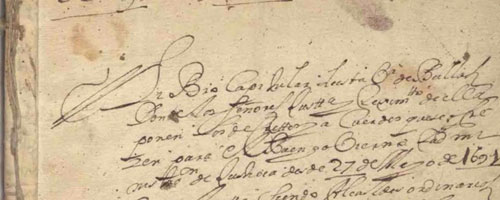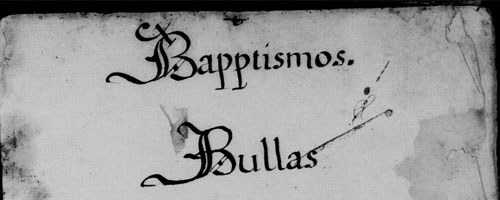History of Bullas


ANTIQUITY
The first signs of human presence in the lands which today are the municipality of Bullas date back in the Chalcolitic period, about 5,000 years ago. Remains belonging to this time have been found in the archaeological sites of Cabezo del Oro, Reclín, El Castellar, la Fuente Mula or Pasico Ucenda. El Argar culture, present in the Southeast of the Iberian Peninsula during the Bronze Age, left more remains in those places as well as in the Cabezo del Molinar and Fuente de la Higuera.
After the Iberian period we have to wait until the Roman times to find a significant settlement of the Bullas territory. There were no cities but plenty of “villae” or farmhouses which used the various springs to develop agricultura. Remains of these buildings have been discovered in Fuenblanquilla, Fuente Mula, El Romero, Fuente de la Carrasca, La Copa and La Loma, although the most important one is that of Los Cantos, settled since the 1st century AD and keeping its activity until the Barbarian invasions of the early 5th century.
The villa of Los Cantos has been a place of important findings such as the four white marble sculptures of children, being one of them the famous “Child of the Grapes”, an important local symbol representing a season genius, specifically that of the Autumn.
There have been several ridiculous theories that intended to provide a great history to Bullas. Many of these fictional data were obtained from the “fake chronicles” typical in the 17th and 18th centuries which aimed to exalt the history of the smaller towns and villages. In this context we have to locate the names of “Abula Bastetana” or “Bulla Regia” for Bullas or the presence of people such as the queen Belkis or the bishop Saint Segundo.

Project Carmesí

FamilySearch.org
THE MIDDLE AGES
After the leaving of the Roman villas there is a dark period regarding the data about the history of the lands of Bullas. During the High Middle Ages this territory had no population and remained under the influence of the nearby city of Begastri (Cehegín), then a bishop see.
We have to wait until the Arab domination when during the 11th or the 12th century the ancient castle of Bullas was built, being located where nowadays is he historical centre of the town. In this same time the little fortress of El Castellar, known as “El Castillico” (“little castle”). Bullas was an Arab foundation, so it is logical that the origin of its name is Arabic and not Latin as it has been thought (bullae = bubbles), due to the many springs located in its lands.
In the mid 13th century the conquest of the Kingdom of Murcia by the Castilian troops took place. In this time the name Bullas is mentioned for the very first time in a document dated on the 22nd of July 1254 which established the transfer of the castle of Bullas to Mula. A few years later Bullas would be part of the Templars Order with Caravaca and Cehegín. In 1285 the Arabs from Huéscar and their chieftain Ali Mohamed attacked the fortress and the Templar knight commander Bermudo Menendez had to flee. The castle was later recovered by the Christian troops and demolished to avoid more attacks.
After the end of the Templar Order in the 14th century Bullas and the rest of the area was transfered to the Saint James Order, present in the town for more than 500 years. In 1347 the castle of Bullas was ruined and there was a project of reconstruction by the knight commander of Caravaca Ruy Chacón. With the Black Death this idea was abandonned, so the ruines remained and Bullas continued uninhabitated. The lands of Bullas were divided between Cehegín and Mula in 1398 and since 1444 it definitively belonged to Cehegín.
THE 17th century. THE RENAISSANCE OF BULLAS
Bullas remained without population until the end of the 16th century. Its lands belonged to Cehegin owners. Bit a bit, the area of the old medieval castle started to be repopulated as the farmers preferred to live near the lands they had to work in. New settlers built their houses on the ruins of the fortress (so it has not been preserved). In the mid 17th century the inhabitants of Bullas started to realize about the disadvantages of belonging to Cehegín, distant about 15 kilometres. The first secession movements began in the ecclesiastical field. The San Antón chapel, a little church built in 1568 had no priest and sacraments could not be administered. The religious segregation was obtained in 1664 and a baptismal font was located in that chapel. This is the famous “stolen baptismal font” because several Bullas men went to recover it in Cehegin when its authorities “kidnapped” it as they were against that religious autonomy of Bullas.
These events were the prelude of the political secession from Cehegín whose procedures started in December 1685. After paying to the Crown the important amount of 34.832 reales and 12 maravedíes, the Spanish king Charles II “the Bewitched” granted the act of township to Bullas on the 19th of December 1689, being effective since the 17th of June 1690 when the judge José de Berzosa arrived to Bullas coming from Madrid and read the king’s proclamation. Two days later the first Council Town was established and met in the Old Square. After that the first census was made and the Bullas territory was demarcated. The village of La Copa, settled like Bullas some decades before, asked to be included in the new municipality, which started its independent life with the only wealth of a few lands and the work of its people.
THE 18TH CENTURY
The years following the local independence were quite dynamic for the new municipality. It was a time of economic development without important conflicts.
The urban area started to grow up quickly and the population, too. As they were necesssary for the town new buildings were built. First, the parish church which substituted the old San Antón chapel. It was finished in 1723 and named after Nuestra Señora del Rosario (Our Lady of the Rosary), who was elected democratically by the people of Bullas. A few years later the public granary (for scarcity times), the slaughterhouse, the town hall and the jail were also built.
the 19th century
The new century started with the reform of the parish church which provided it its current image where the tower specially highlights. It was not to be an easy period for the people of Bullas as they were affected by various epidemics for several decades: tertian fevers in 1802 and 1817, children dysentery in 1821, cholera in 1855 and 1885… These diseases decimated the population, unable to fight against them in the context of a widespread poverty.
There were also frequent conflicts with Mula because of the water of the same name river, creating several legal confrontations and even showdowns. Apart of this the payment of the tithes to the Saint James Order ended in 1841. The century finished with the phylloxera plague that devastated the area’s vineyards and caused a huge problem for the local economy.
But the end of the 19th century was also a time of great public projects. The local oligarchy, with surnames as Carreño, Melgares and Marsilla, were very often the responsible of developing them. It was not strange as they controlled the Municipality’s government, had the money to do it and even became the main beneficiaries of them.
The current cemetery (which replaced the old of El Paraíso established in 1812), was built in 1885, the public wahing place in 1894 and telepone and telegraph connections date from 1897. Electric power arrived to Bullas in 1900, the same year that the Clock Tower was built, carried out as a prívate project of the mayor Joaquín Carreño Góngora and addressed to regulate the irrigation shifts in the nearby area of El Calderón.
the 20th century
Bullas lived the 20th century with the same changes and conflicts that the rest of Spain. During the first third there was a period of certain social and economic stability.
The proclamation of the Second Spanish Republic in 1931 meant the start of the political polarization like the entire country. The situation overflew with the breakout of the Civil War in July 1936. Bullas remained in the Republican zone until the end of the conflict. Young men went to the front lines and more than 200 of them died. The revolutionary power seized the landowners properties and destroyed most of the parish church images and objects. Anyway, the general life of the town passed in an environment of tense calm.
The arrival of the Francoist dictatorship meant moments of repression for the people who collaborated with the Republic and left-wing militants. Traditional values returned and the religious fervour was recovered, too. They were the “hunger years”, hard times dominated by scarcity and poverty. From the 50’s there was a light improvement, particularly with the help of the emigration, widely spread in the 60’s. Barcelona, Madrid and Biscay as well as France and Germany received plenty of Bullas workers and their families. This decade also witnessed the beginning of the processed vegetables industry which contributed to the diversification of an economy still based on agriculture. The town grew up so much with the birth of new quarters (Barrio Nuevo, Barrio Francés and Barrio del Cura).
The last third of the century, that of the coming back of democracy in Spain, meant a great development of Bullas in all the aspects. Construction became as one of the main economic sectors and second and third level education were spreading, too. New infraestructures modernised Bullas. In the last years of the 20th century, Bullas received immigrants mainly from Ecuador and Colombia who looked for a better future, a situation kept until the first decade of the 21st century with the economic crisis also affecting the local population.
